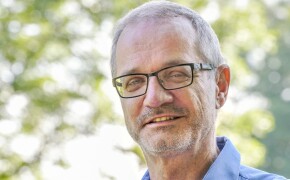The hybrid design of citizens participation is both digital and on the spot. It allows to capture a broad variety of community views.
We still lack reliable tools to capture the variety of opinions and preferences in a large and diverse urban populace. To break new ground on this issue, we organized a “hybrid” citizens participation on future BGI-projects in the city. Participants were offered a wide variety of participation formats. First, we invited stakeholder to workshops. To reach a broader public and not always the same people who are well-informed and engaged, we choose to integrate a participation in the town fair “Donau-Lust”. The venue of this festival consisted of a – usually quite busy – Danube shoreline road that had been closed for traffic for ten consecutive days.We assumed that the setting of the fair would stimulate citizens to think about the future development of the city in general and its Danubian floodplains in particular. The framework of the participation process consisted of ten posters that had been arrayed on the shoreline of the Danube. They showed planned as well as implemented projects on the river and prompted visitors to express their opinion. To this end, they could scan the QR-Code on the posters and be directed to the online participation platform. Alternatively, less tech-savvy visitors could voice their ideas on sticky notes or on the posters and a huge whiteboard.
Resources needed
The main expenses incurred in organising a festival with relation to the topic. The event was supervised by one staff member who collected the input on a daily basis and assessed the contributions with data analysis software. Website was provided by the City of Ingolstadt.
Evidence of success
In quantitative terms, we registered 562 contributions during the ten days of the fair – a clear sign that citizens take great interest in the future of the city’s BGI. In qualitative terms, we were positively surprised by the breadth and depth of the ideas stated by the participants. The participation event yielded a great number of salient contributions that can be integrated in the further planning process. Moreover, the Blue Green City-Project was popularized among the local community.
Difficulties encountered
Organising a festival is much more time-consuming and expensive than holding a workshop. A website dedicated to participation has to provided.
Potential for learning or transfer
We sought to show a new pathway towards integrating the preferences and the creative input of local residents in the planning process. Empowering citizens to shape proposals on future land use allows for a more socially inclusive and user-oriented development of BGI, while fostering a sense of site-ownership amid the local community. Regions may choose to adopt our concrete proceedings (like the framework consisting of posters to be commented, embedded in a festival), or to retain the general idea of the practice: that of capturing a wide diversity of community views via diverse participation formats, with stakeholders and citiziens, digital and on site. It is most important to adapt the practice to the local context, and to keep continuously adjusting the participation instruments to the feedback received. In doing so, the public authorities will increase the yields of the participation process and make sure that the citizens feel that their input is taken seriously.
Please login to see the expert opinion of this good practice.
Tags: Awareness, Citizen engagement, Public engagement, Urban area








